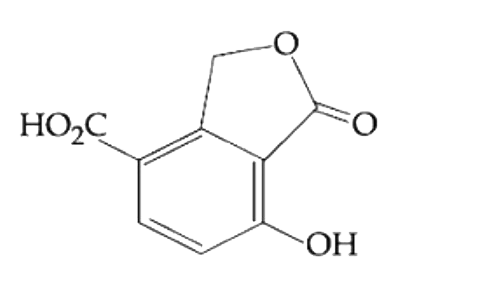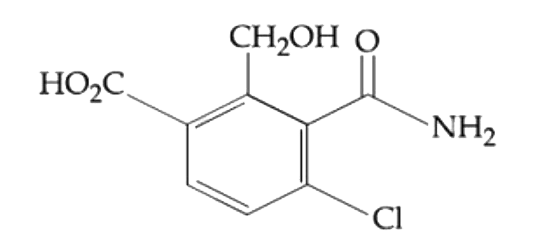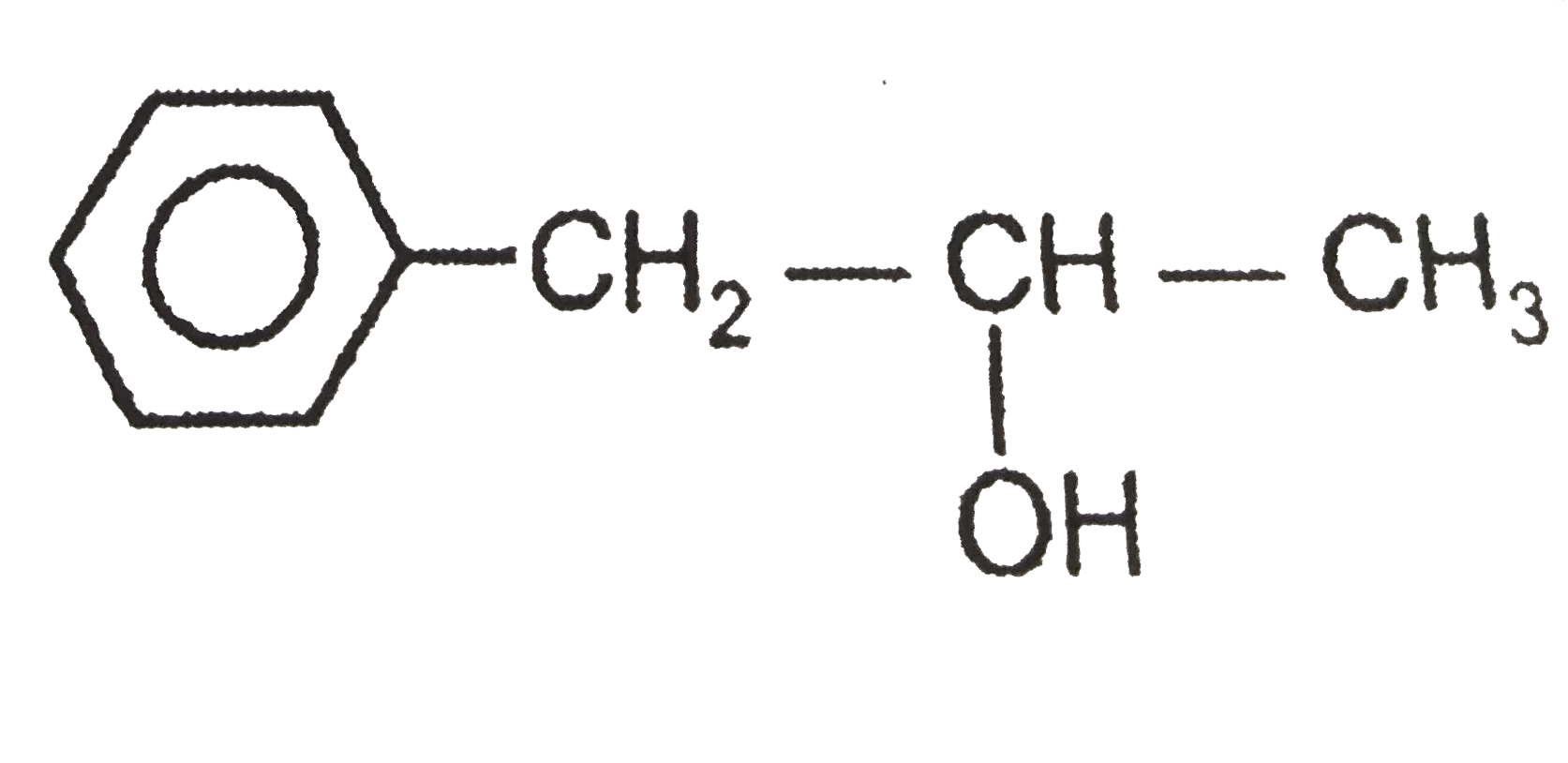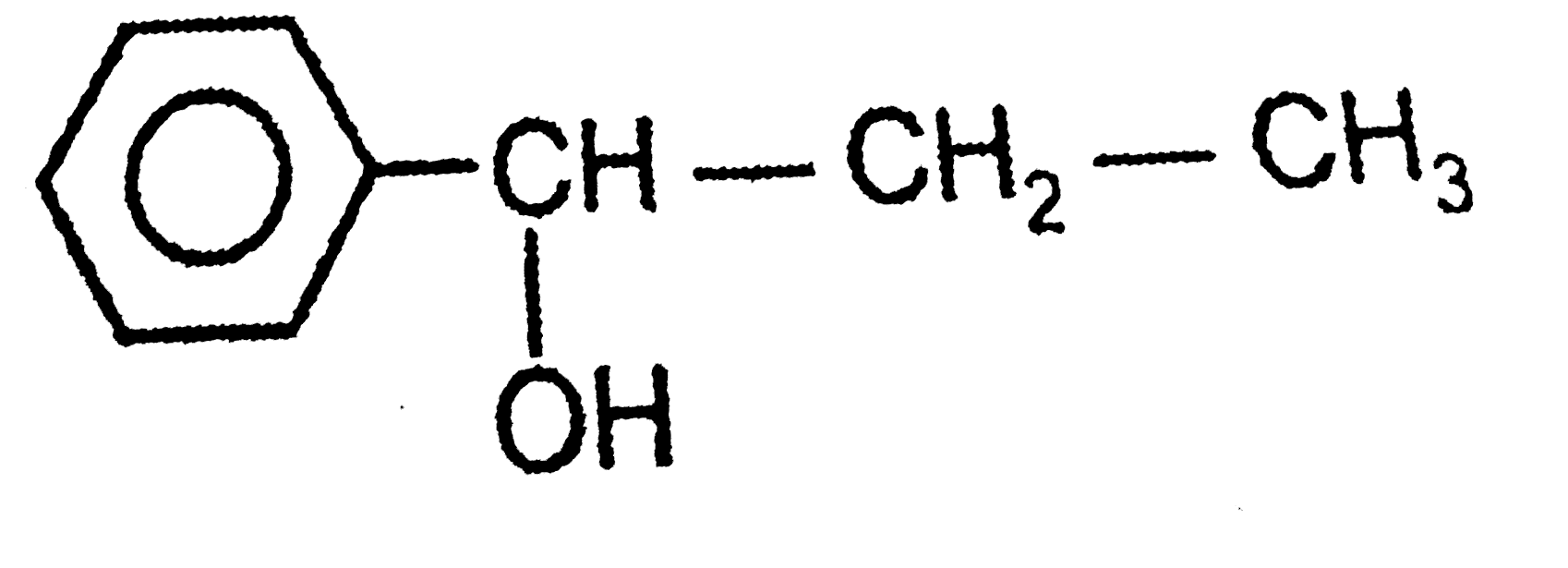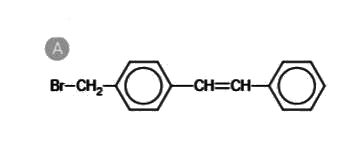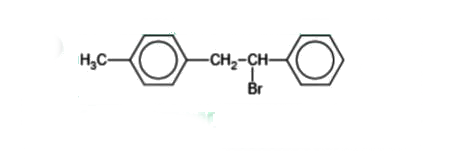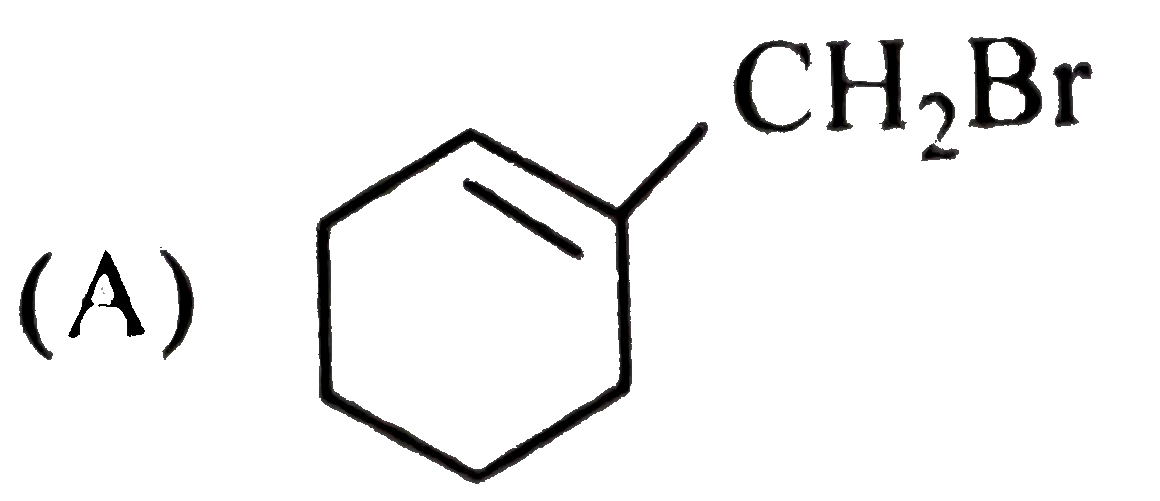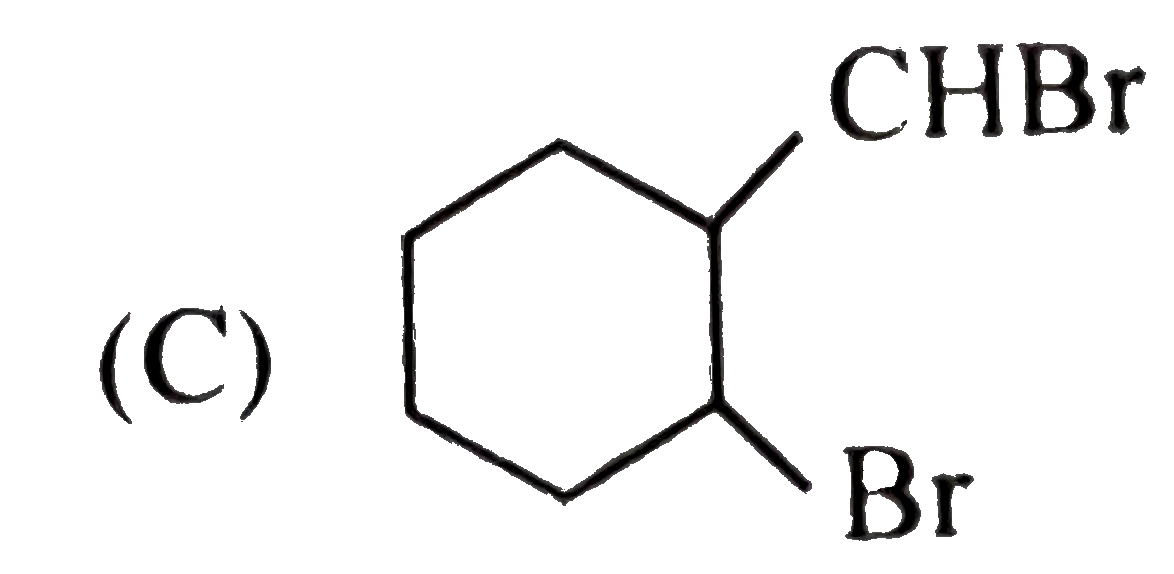Explore topic-wise InterviewSolutions in .
This section includes InterviewSolutions, each offering curated multiple-choice questions to sharpen your knowledge and support exam preparation. Choose a topic below to get started.
| 28652. |
The major product (A) of the following reaction |
|
Answer»
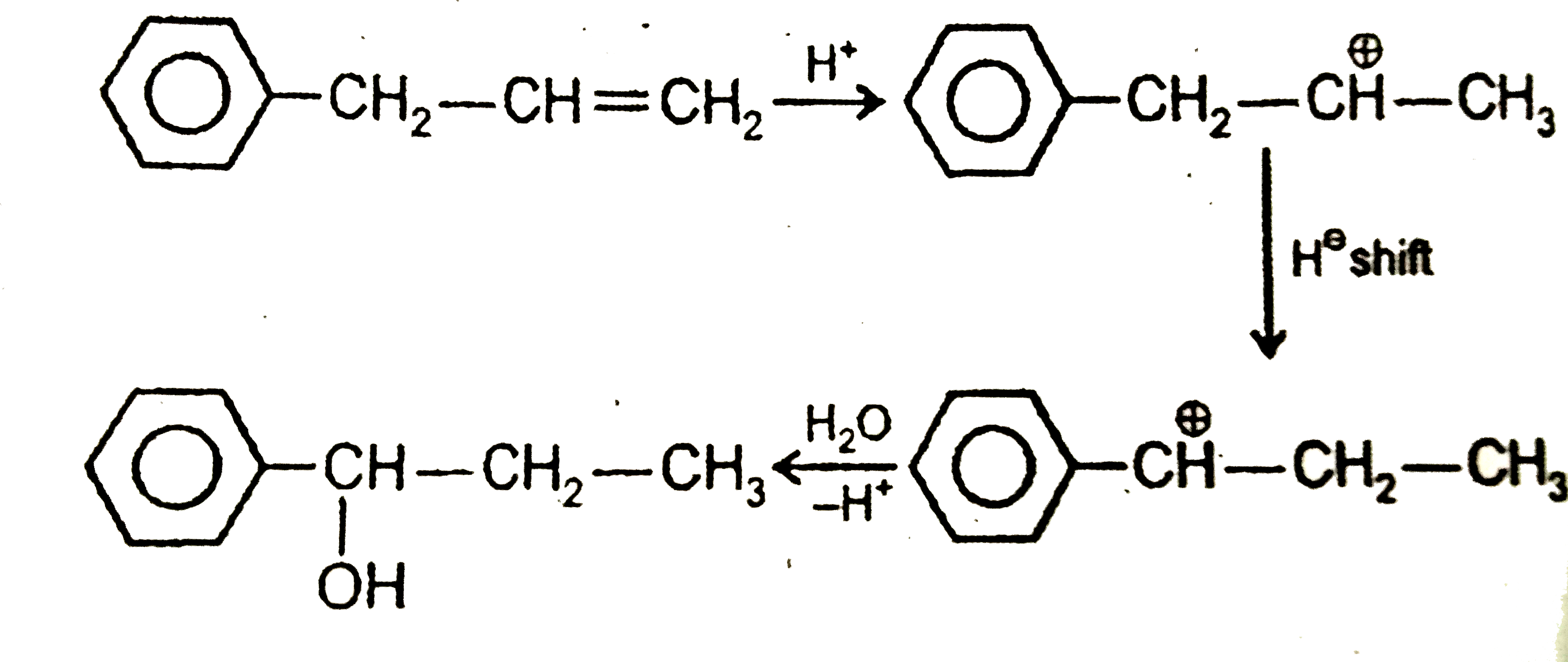
|
|
| 28653. |
The molar volume of ethane ( C_(2) H_(6)) at 819 ^(@)C and 760 mm of pressure is : |
|
Answer» 22.4L `((22.4 L ) XX 1092 K)/((273K)) = 89.6L` |
|
| 28654. |
The major product [B] in the following sequence of reaction is having how many sp^3 hybridized Carbon atoms ?(CH_(3)-underset(CH(CH_3)_2)underset(|)C=CH-CH_2CH_3)underset((ii)H_2O_2,OH^(Theta))overset((i)B_2H_6)rarr[A]underset(Delta)overset("dil."H_2SO_4)rarr[B] |
|
Answer» |
|
| 28655. |
The molar volume of helium is 51 .4 litre at |
|
Answer» A) 100°C and 1.0 atm |
|
| 28656. |
The major product (A) of the following reactions is: |
|
Answer»
 . .
|
|
| 28658. |
The molar specific heat of air at room temperature and 1 atm pressure is 25J K^(-1) mol^(-1). How much heat is required to heat the room through 10 kelvin at room temperature if 144gof air is present in room ? Vapour density of air =14.4 |
|
Answer» <P>1250kJ` or HEAT required `=` no. of moles `XX C_(p)xxT` `=(14.4xx25 xx 10)/(14.4 xx 2 )=5 xx 25 xx 10=1250J` |
|
| 28659. |
The major product (70% " to " 80) of the reaction between m-dinitrobenzene with (NH_(4))_(2)S_(x) is |
|
Answer»
|
|
| 28660. |
The molar solution of sulphuric acid is equal to |
|
Answer» N SOLUTION As `H_(2)SO_(4)` is dibasic, its basicity is 2. So molar solution of `H_(2)SO_(4)` is equal to 2N. |
|
| 28661. |
The major organic products in the given reaction. . |
|
Answer»

|
|
| 28662. |
The molar solubility (mol L^(-1)) of a sparingly soluble salt MX_(4) is 's'. The corresponding solubility product is K_(sp). 's' is given in terms of K_(sp) by the relation |
|
Answer» `s = (256 K_(sp))^(1//5)` `s = ((K_(sp))/(256))^(1//5)`. |
|
| 28663. |
The major organic product in the reaction, CH_(3)-O-CH(CH_(3))_(2)+ HI to "Product" is |
|
Answer» `ICH_(2)OCH(CH_(3))_(2)` `CH_(3)O CH(CH_(3))_(2)+ HI OVERSET(373K)to underset("Methyl iodide")(CH_(3)I)+ underset("ISOPROPYL ALCOHOL")((CH_(3))_(2)CHOH)` The alkyl halide is always formed from the smaller alkyl group. |
|
| 28664. |
The major organic product formed in the reaction |
|
Answer»
 Since endocyclic double bond is more stable than excoyclic double bond, THEREFORE, INITIALLY formed LEDD stable free RADICAL (i) changes into more stable free radical (ii) which then react with `Br_(2)` to give the product. |
|
| 28665. |
The molar solubility (in mol L^(-1)) of a sparingly soluble salt MX_4 is 'S'. The corresponding solubility product is 'K_(sp)' 'S' in terms of K_(sp)' is given by the reaction |
|
Answer» `S=((K_(SP)))/(128))^(1//4)` ` S ""S "" 4S ` `thereforeK_(sp )= [M^(4+) ][X^-]^4= S .(4S)^4 = 256 S^5` ` S= ((K_(sp ))/( 256 ))` |
|
| 28666. |
The major organic product in the reaction CH_3 -O-CH(CH_3)_2 + HI toProduct is |
|
Answer» `CH_3OH + (CH_3)_2CHI` |
|
| 28667. |
The molar ratio of Fe^(2+) to Fe^(3+) in a mixture of FeSO_(4) and Fe_(2)(SO_(4))_(3) having equal number of sulphate ions in both ferrous and ferric sulphates is: |
|
Answer» Solution :`FeSO_(4)rarrFe^(2+)+SO_(4)^(2-)` `Fe_(2)(SO_(4))_(3)rarr2Fe^(3+)+3SO_(4)^(2-)` Suppose X mole `SO_(4)^(2-)` ion are furnished by both `FeSO_(4)` and `Fe_(2)(SO_($))_(3)`. Number of moles of `Fe^(3+)=x` Number of moles of `Fe^(3+)=(2)/(3)x` `Fe^(2+):Fe^(3+)::x:(2)/(3)x` `=3:2` |
|
| 28668. |
The major organic compound formed by the reaction of 1,1,1-trichloroethane with silver powder is: |
|
Answer» acetylene `CH_(3)C Cl_(3)+2Ag+CH_(3)C Cl_(3)+CH_(3)C Cl_(3)tounderset("but-2-yne")(CH_(3)C -= C CH_(3)+6AgCl)` Only (a) HS specific dipole MOMENT. All other are SYMMETRICAL and have `mu=0`. |
|
| 28669. |
The molar mass of the solute sodium hydroxide obtained from the measurement of osmotic pressure of its aqueous solution at 27^(@)C is 25 g mol^(-1). Therefore, its ionization percentage in this solution is |
|
Answer» 75 `{:(NaOHrarrNa^(+)+OH^(-)),("1 mol"),(1-alpha""alpha""alpha"Total "=1+alpha):}` `i=1+alpha or alpha=i-1=0.6=60%` |
|
| 28670. |
The major organic compound formed by the reaction of 1,1,1 -trichloroethane with silver powder is : |
|
Answer» 2-Butyne |
|
| 28672. |
The molar solubility (in mol L^(-1)) of a sparingly soluble salt MX_(4) is 's'. The corresponding solubility product is K_(sp). 's' is given in terms of K_(sp) by the relation : |
|
Answer» `s=(256 K_(sp))^(1//5)` If SOLUBILITY is s, `[M^(+)]=s, [X^(-)]=4s` `K_(sp)=[M^(+)][X^(-)]^(4)=(s)(4s)^(4)=256 s^(5)` `s=((K_(sp))/(256))^(1//5)` . |
|
| 28673. |
The major constituent of cement is: |
|
Answer» `Al_2O_3` |
|
| 28674. |
The molar neutralization heat for KOH and HNO_(3) as compared to molar neutralization heat ofNaOH and HCl |
|
Answer» Less |
|
| 28675. |
The major compound obtained by mono-chlorination of n-propyl benzene using chlorine in presence of light is ? |
|
Answer»

|
|
| 28676. |
The molar conductivity of 0.025 mol L^(-1) methanoic acid (HCOOH) is 46.1 Scm^2 mol^(-1). Calculate its degree of dissociation and dissociation constant. Given lambda^@ (H^+)=349.6 S cm^2 mol^-1 and lambda (HCOO^-)= 54.6 S cm^2 mol^-1 |
|
Answer» Solution :`lambda^@_m (HCOOH)= lambda^@(H^+) + lambda^@(HCOO^-)=349.6 + 54.6 = 404.2 S cm^2 mol^-1` Degree of DISSOCIATION of HCOOH = `Lambda_m/Lambda_m^@= 46.1/404.2=0.114` for WEAK electrolytes, `K_a = (Calpha^2)/(1-alpha)THEREFORE K_a=(0.025xx(0.114)^2)/(1-0.0114)=3.67xx10^-4` |
|
| 28677. |
The molar mass of the solute sodium hydrdoxide obtained from the measurement of the osmotic pressure of its aqueous solution at 27^(@)C is 25 g mol^(-1). Therefore its ionization percentage in this solution is |
|
Answer» 75 ABNORMAL MOLECULAR mass `=(M_("normal"))/(1+ALPHA)` Abnormal molecular mass = 40 So, `25=(40)/(1+alpha)rArr alpha =0.6` Ionisation percemntage `= 0.6xx100=60%`. |
|
| 28678. |
The major compound from which iodine is isolated as |
|
Answer» NAI `NaIO_(3) + H_(2) SO_(4) rarr NaHSO_(4) + HIO_(3), HIO_(3) + 5HI rarr 3H_(2)O + 3I_(2)` |
|
| 28679. |
The molar masses of oxygen and sulphur dioxide are 32 and 64 respectively. If 1 L of oxygen at 25^@Cand 750 mm Hg pressure contains N molecules, then the number of molecules in 2 L sulphur dioxide under the same conditions oftemperature and pressure is : |
|
Answer» N/2 |
|
| 28680. |
The major component used in preparation of different types of glasses is |
|
Answer» silica |
|
| 28681. |
The molar mass of N_(2)O as well as CO_(2) is 44 g "mol"^(-1). At 25^(@)C and 1 atm pressure. 1L N_(2)O contains n molecules of gas. The number of CO_(2) molecules in 2L under same conditions will be: |
| Answer» ANSWER :B | |
| 28682. |
The molar mass of a volatile liquid (b.p. lt 90^(@)C) is to be detemined by measuring the density of its vapour in an Erlenmeyer flask cpped with Al foil with a pinhole to allow the vapour to escape. A sample of the liquid is added to the pre-weighed flask that is heated in a water bath until the liquid has evaporated, after which the flask is dried and reweighed. Which piece of information is not required to determine the molar mass of the liquid? |
|
Answer» BAROMETRIC pressure |
|
| 28683. |
The maine product of the reaction of CH_(3)CH_(2)Br and KCN is |
|
Answer» `CH_(3)CH_(2)CN` |
|
| 28684. |
The molar ionic conductance of octahedral complexes is given below : (P)PtCl_(4).5NH_(3)""(Q)PtCl_(4).4NH_(3) (R)PtCl_(4).3NH_(3)""(S)PtCl_(4).2NH_(3) Correct order is : |
|
Answer» <P>`PltQltRltS` `(Q)[Pt(NH_(3))_(4)Cl_(2)]Cl_(2)rArr3ions` `(R)[Pt(NH_(3))_(3)Cl_(3)]ClrArr2ions` `(S)[Pt(NH_(3))_(2)Cl_(4)]rArr0ions` So,`PgtQgtRgtS` |
|
| 28685. |
The major binding force of diamond, silicon and quartz is |
|
Answer» ELECTROSTATIC force |
|
| 28686. |
The molar ionic conductances at infinte dilution of Mg^(2+) and Cl^(-) are 106.1 and 76.3 ohm^(-1) cm^(2) solution of MgCl_(2) at infinite dilution will be |
|
Answer» `29.8 ohm^(-1) cm^(2) mol^(-1)` `=106.1+ 2 xx 76.3` `= 258.7 OMEGA^(-1) cm^(2) mol^(-1)` |
|
| 28687. |
The major component of alloys of lanthanides is |
|
Answer» Gd |
|
| 28688. |
The major air pollutantis |
|
Answer» CO |
|
| 28689. |
The molar heats of combustion of C_(2)H_(2)(g), C (graphite) and H_(2)(g) are 310.62 kcal, 94.05 kcal and 68.32 kcal respectively. Calculate the standard heat of formation of C_(2)H_(2)(g). |
|
Answer» Solution :Given that, (i) `{:(C(s)+O_(2)(g) to CO_(2)(g),,DELTAH=-94.05"KCAL"):}` (ii) `{:(H_(2)(g)+(1)/(2)O_(2)(g) to H_(2)O(g),,DeltaH=-68.32"kcal"):}` (III) `{:(C_(2)H_(2)(g)+2(1)/(2)O_(2)(g) to 2CO_(2)(g)+H_(2)O(g),,DeltaH=-310.62"kcal"):}` We have to calculate `DeltaH` of the equation `2C(s)+H_(2)(g) to C_(2)H_(2)(g),DeltaH=?` Proceeding the same way as in Example 9, we apply, [2xx Eqn. (i)+Eqn.(ii) - Eqn. (iii)] and we GET, `2C(s)+2O_(2)(g)+H_(2)(g)+(1)/(2)O_(2)(g)-C_(2)H_(6)(g)-2(1)/(2)O_(2)(g) to 2CO_(2)(g)+H_(2)O(g)-2CO_(2)(g)-H_(2)O(g),DeltaH=2xx(-94.05)+(-68.32)-(-310.62)` or `2C(s)+H_(2)(g) to C_(2)H_(2)(g),DeltaH=54.20"kcal"` |
|
| 28690. |
The major binding force in diamond is- |
|
Answer» COVALENT BOND |
|
| 28691. |
The molar heat of vaporisation for water is 9.72 kcal mol^(-1). The amount of heat change when 45 g of water condense is : |
|
Answer» 437.4 KCAL Heat of condensation of 45 g of water `= (9.72 xx 45)/(18) = 24.3 kcal` |
|
| 28692. |
The molar heat capacity of water at constant pressure is 75 JK^(-1)mol^(-1). When 1.0 kJ of heat is supplied to 100 g of water which is free to expand the increase in temperature of water is |
|
Answer» 2.4 K `Q=mc=100xx4.17xxt=1000` `t=(1000)/(100xx4.17)=2.4K` |
|
| 28693. |
The molar heat capacity of Al is 24 J mol^(-1) K^(-1). The energy required to raise the temperature of 60.0g of Al from 25^(@)C to 45^(@)C is |
|
Answer» 3.2 kJ Mass of Al = 60 g Molar heat capacity of Al = `24 JK^(-1) mol^(-1)` Specific heat capacity of Al, `C = (24)/(27) = 0.889 JK^(-1) g^(-1)` Energy required = `m XX c xx Delta T` `= 60 xx 0.889 xx 20` = 1066.8 or = 1.07 kJ |
|
| 28695. |
The molar heat capacity for a gas at constant T and P is |
|
Answer» `3/2` R |
|
| 28696. |
The main structural feature of protein is: |
|
Answer» The ESTER LINKAGE |
|
| 28697. |
The molar heat capacity at constant pressure of O_(2) is given by bar(C_(P)) = 25.723 + 12.979 xx 10^(-3) T xx 10^(-3) T - 38.618 xx 10^(-7) T^(2) If the temperature of the system containing 2 mol of O_(2) is heated from 27^(@) C to 227^(@) C and explained from 2dm^(3) to 8dm^(3), calculate the change in entropy. Assume gas is ideal and the process is carried reversibly. |
|
Answer» Solution :`DeltaS = nint_(T_(1))^(T_(2)) barC_(P).(DT)/P -nRln P_(2)/P_(1)` `Deltas = 2mol int_(T_(1))^(T_(2))(25.723 + 12.979 XX 10^(-3) T - 38.618 xx 10^(-7) T^(2))(dT)/T + 2(8.314 J "mol"^(-1) K^(-1)) ln (8dm^(3))/(2dm^(3))` `DeltaS = 2mol xx 25.723 JK^(-1) "mol"^(-1) int_(300)^(500) (dT)/T + 2mol (12.729 xx 10^(-3)) JK^(-2) mol^(-1) int_(300)^(500) dT + 2 mol (-38.618 xx 10^(-7)) JK^(-3) mol^(-1) int_(300)^(500) T propto T + 2 "mol" (8.314 J mol^(-1)K^(-1))ln 4` `=53.28 JK^(-1)` |
|
| 28699. |
The molar freezing point constant of water is 1.86 K molality^-1. If 342 g of cane sugar (C_12H_22O_11) are dissolved in 1000 g of water, the solution will freeze at: |
|
Answer» `-1.86^@C` |
|

